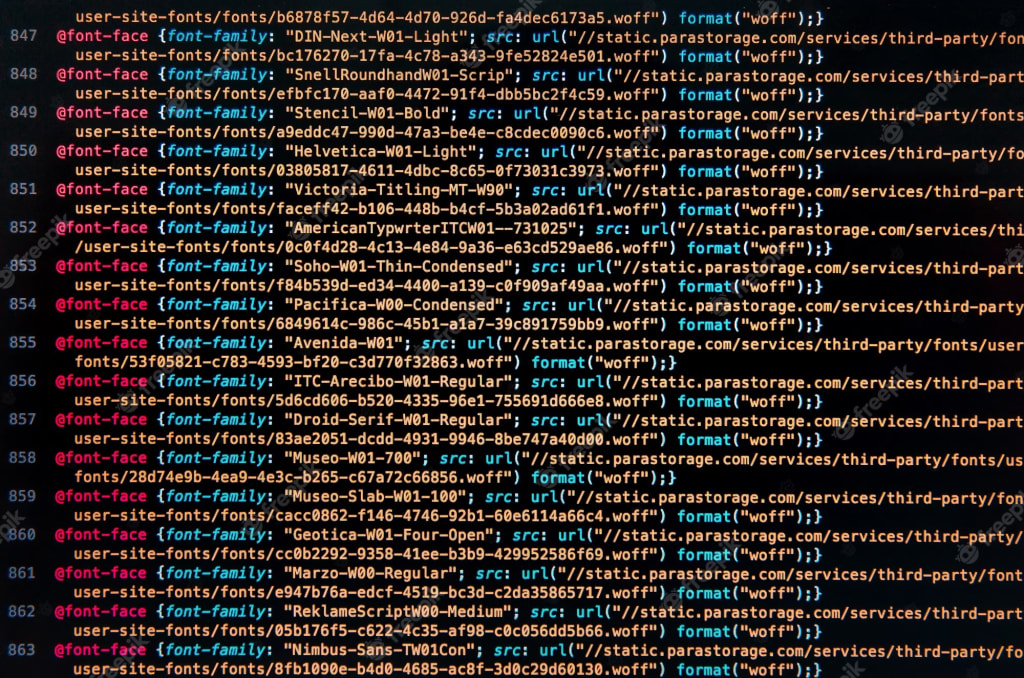
here are 50 methods for coding:
Learn a programming language
Understand the syntax and grammar of the language
Read documentation and guides on the language
Write and practice code in the language
Debug and test your code
Use version control tools like Git to manage your code
Learn how to use an integrated development environment (IDE)
Use code editors like Visual Studio Code or Sublime Text
Attend coding workshops and conferences
Join a coding community or online forum
Participate in coding challenges and competitions
Collaborate with other coders on projects
Create your own projects and applications
Learn to code in a team setting
Practice pair programming with another coder
Learn to code for specific platforms like mobile or web
Understand computer science concepts like algorithms and data structures
Learn object-oriented programming concepts
Use libraries and frameworks to simplify coding tasks
Write clean and efficient code
Use comments and documentation in your code
Follow best practices for coding standards
Use software testing techniques like unit testing and integration testing
Use Continuous Integration/Continuous Deployment (CI/CD) pipelines
Use cloud computing services like Amazon Web Services or Microsoft Azure
Learn to code with Artificial Intelligence and Machine Learning
Build data-driven applications
Use databases and SQL to store and manage data
Use web development frameworks like React or AngularJS
Learn front-end web development technologies like HTML, CSS, and JavaScript
Use web development tools like Bootstrap or Materialize
Learn back-end web development technologies like Node.js or Ruby on Rails
Use server-side scripting languages like PHP or Python
Learn how to create APIs and RESTful web services
Use NoSQL databases like MongoDB or Cassandra
Learn how to build and deploy microservices
Use containerization tools like Docker or Kubernetes
Use serverless computing platforms like AWS Lambda or Azure Functions
Learn how to build and deploy desktop applications
Use cross-platform development frameworks like React Native or Flutter
Learn how to create games with game development engines like Unity or Unreal Engine
Use version control tools like GitHub to collaborate with others
Use software development methodologies like Agile or Scrum
Learn how to secure your applications and data
Use DevOps tools and practices for automated testing and deployment
Learn how to create chatbots and virtual assistants
Use natural language processing (NLP) for text analysis and classification
Use computer vision techniques for image and video analysis
Learn how to create and deploy machine learning models
Stay up-to-date with the latest coding trends and technologies.
"Python Crash Course" is a book written by Eric Matthes that provides a hands-on, project-based introduction to programming in Python. The book is designed for beginners who have little or no experience with programming, but it is also suitable for experienced programmers who want to learn Python or brush up on their skills.
The book is divided into two parts: the first part covers the basics of Python programming, while the second part focuses on more advanced topics and projects. The first part of the book covers topics such as variables, data types, loops, functions, and modules, as well as how to work with files, exceptions, and classes in Python.
The second part of the book focuses on more advanced topics and projects, including web development, data visualization, game development, and machine learning. Each project in the book is designed to build on the concepts and skills learned in earlier chapters, and includes detailed explanations and examples to help you understand the code.
Some of the projects included in the book are:
A simple game that uses the Pygame library to create a basic game loop and handle user input
A web application that uses the Django framework to create a basic blog
A data visualization project that uses the Matplotlib library to create a graph of temperature data
A machine learning project that uses the scikit-learn library to classify images of handwritten digits
Throughout the book, the author emphasizes best practices for coding standards, testing, and debugging, and provides practical advice and tips to help you improve your coding skills. The book also includes exercises and quizzes at the end of each chapter to help you reinforce your learning.
The book is divided into two parts: the first part covers the basics of Python programming, while the second part focuses on more advanced topics and projects.
The first part of the book covers topics such as variables, data types, loops, functions, and modules, as well as how to work with files, exceptions, and classes in Python.
The second part of the book focuses on more advanced topics and projects, including web development, data visualization, game development, and machine learning.
Each chapter includes hands-on exercises and quizzes to help you reinforce your learning and test your understanding of the concepts covered.
The book is written in a clear and concise style, with plenty of examples and explanations to help you understand the code.
The author emphasizes best practices for coding standards, testing, and debugging throughout the book, and provides practical advice and tips to help you improve your coding skills.
The book uses a project-based approach, where you learn by building real-world applications and projects that are relevant and interesting.
The projects in the book are designed to build on the concepts and skills learned in earlier chapters, and each project includes detailed explanations and examples to help you understand the code.
The book includes a variety of projects, from simple games and web applications to data visualization and machine learning, so you can choose projects that interest you and match your skill level.
The book also includes a section on debugging and troubleshooting, with tips and techniques for finding and fixing errors in your code.
The book is suitable for beginners with no programming experience, but it's also a great resource for experienced programmers who want to learn Python or brush up on their skills. The book covers Python 3, which is the latest version of the language as of 2021. This means that you'll be learning the most up-to-date and relevant version of Python.
The book includes a section on data structures, such as lists, dictionaries, and sets, which are essential for many programming tasks.
The book includes chapters on object-oriented programming (OOP), which is a powerful programming paradigm that allows you to create complex and flexible software.
The book includes a chapter on testing your code, which is a critical skill for any programmer. The chapter covers techniques for writing effective tests, using the pytest framework, and debugging your tests.
The book includes a chapter on working with APIs (Application Programming Interfaces), which are essential for building web applications and interacting with other software systems.
The book includes a chapter on deploying your Python applications, which covers topics such as virtual environments, package managers, and cloud hosting services.
The book includes a chapter on machine learning, which is a rapidly growing field that uses algorithms and statistical models to analyze data and make predictions. The chapter covers topics such as supervised and unsupervised learning, classification, regression, and clustering.
The book includes a chapter on Django, which is a popular web framework for building web applications. The chapter covers topics such as creating views, templates, models, and forms, as well as handling user authentication and deploying your application.
The book includes a chapter on game development, which uses the Pygame library to create a simple game. The chapter covers topics such as game loops, sprites, collision detection, and sound effects.
The book includes a chapter on data visualization, which uses the Matplotlib library to create graphs and charts from data. The chapter covers topics such as bar charts, line charts, scatter plots, and heat maps.
The book includes a chapter on web scraping, which is the process of extracting data from websites. The chapter covers topics such as HTML parsing, using the requests library, and using Beautiful Soup to extract data.
Overall, "Python Crash Course" covers a wide range of topics and techniques in Python programming, from the basics to more advanced topics such as web development, data analysis, and machine learning. Whether you're a beginner or an experienced programmer, this book is a great resource for learning Python and building real-world applications.





Comments
There are no comments for this story
Be the first to respond and start the conversation.